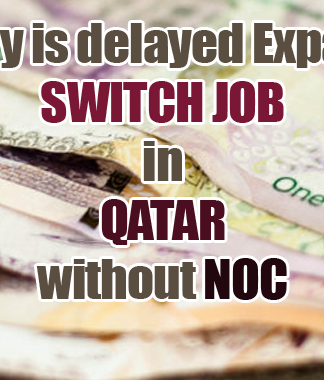Poppy farmers embrace green energy
The Taliban are going after solar-powered water pumps to try to dry up poppy crops in the middle of an economic crisis
PUBLISHED : 12 JUN 2022 AT 04:00

Farmers harvest opium from a field irrigated with a solar-powered water pump in Kandahar. photos: BRYAN DENTON/nyt
For years, opium has been the monster too big to slay. One Afghan government after another has pledged to stamp out opium production and trafficking, only to prove unable to resist billions of dollars in illicit profits.
The Taliban government of the 1990s ultimately managed to reduce opium cultivation. But after the US-led invasion in 2001, opium taxes and smuggling helped fuel the Taliban’s own 20-year insurgency.
Now, with the Taliban back in power, the insurgents turned politicians are again struggling to eradicate opium cultivation and the rampant addiction problem that has come with it. The Taliban announced on April 3 that poppy cultivation had been outlawed, with violators to be punished under Sharia law.
But stamping out opium will be more difficult than ever because of a shift by poppy farmers to green energy.
Water pumps powered by cheap and highly efficient solar panels are able to drill deep down into rapidly dwindling desert aquifers. The solar panels have helped generate bumper opium harvests year after year since farmers in southern Afghanistan’s poppy-growing belt began installing them around 2014.
Now, solar power is a defining feature of southern Afghan life. Tiny solar panels power light bulbs in mud huts, and solar-driven pumps irrigate cash crops like wheat and pomegranates, as well as subsistence farmers’ vegetable plots.
The solar arrays have been central to ensuring Afghanistan’s status as the global leader in opium. Afghanistan produced 83% of the world’s opium from 2015 to 2020, according to the United Nations Office on Drugs and Crime. Even with a grinding war and persistent droughts, opium cultivation in Afghanistan rose to 224,000 hectares in 2020 from 123,000 hectares in 2009, the UN reported.
 Young boys help a technician install solar panels on a grape farm in the Zhari district of Kandahar. BRYAN DENTON/nyt
Young boys help a technician install solar panels on a grape farm in the Zhari district of Kandahar. BRYAN DENTON/nyt
The previous US-backed government had spent US$8.6 billion on poppy eradication, but top Afghan officials were deeply complicit in the opium trade, building garish “poppy palaces” in Kabul, the capital, and buying gaudy villas in Dubai, in the United Arab Emirates. A 2018 government inspector-general’s report concluded that the campaign “had no lasting impact”.
The Taliban, for their part, have condemned opium as anti-Islamic, as Afghanistan’s poppy crop sustains addicts in Europe and the Middle East, as well as a huge number inside Afghanistan. But given their own deep ties to opium smuggling during the insurgency, Taliban leaders are walking a fine line between hypocrisy and holiness.
 A prison guard watches over a large group of men identified as heroin addicts by Taliban officials in Kandahar. BRYAN DENTON/nyt
A prison guard watches over a large group of men identified as heroin addicts by Taliban officials in Kandahar. BRYAN DENTON/nyt
A widespread crackdown would exacerbate Afghanistan’s already-devastating postwar economic collapse and antagonise the Taliban’s core constituency among Pashtun farmers, impoverishing families that rely on the crop to be able to afford food. Eradication would require not only seizing farmers’ solar panels but also confronting Taliban commanders complicit in the trade — at a time when the movement is facing internal dissatisfaction as the money dries up.
The opium trade earned about $1.8 billion to $2.7 billion last year, the United Nations has estimated. Opium sales have provided 9% to 14% of Afghanistan’s gross domestic product, compared with 9% provided by legal exports of goods and services.
“The cultivation of opium and export of opiates is hugely important for the Afghan economy as a whole, and any implementation of the ban will have wide-ranging consequences,” the Afghanistan Analysts Network, an independent research group, wrote in a report last month.
Opium farmers now rely on at least 67,000 solar-power-fed water reservoirs across Afghanistan’s desert southwest, according to a European Union-funded research project by David Mansfield, a consultant who has studied illicit economies and rural livelihoods in Afghanistan for two decades.
 Bread, an important food staple in Afghanistan, for sale at a bakery in downtown Kandahar. BRYAN DENTON/nyt
Bread, an important food staple in Afghanistan, for sale at a bakery in downtown Kandahar. BRYAN DENTON/nyt
The panels, which supplanted more expensive and less reliable diesel to run water pumps, have helped turn the desert green. The population of previously uninhabited desert areas in Kandahar, Helmand and Nimruz provinces ballooned to at least 1.4 million people in recent years as solar-driven pumps helped expand arable land, according to Mr Mansfield’s research.
“For many opium farmers, abundant water is now a given,” he said. “No one perceives it to have a cost.”
The Taliban have taken aim at some solar-powered pumps. On May 13, the governor of Helmand province, adjacent to Kandahar province in the opium belt, ordered police to confiscate panels and pumps so that newly planted poppies would die in parched fields.
“Do not destroy the fields, but make the fields dry out,” Governor Maulave Talib Akhund said in a statement. He added, “We are committed to fulfilling the opium decree.”
The opium ban comes amid catastrophic levels of hunger, poverty and drought. The United Nations estimates that 23 million Afghans are suffering acute food deprivation. An economy once propped up by Western aid has collapsed under sanctions and freezing of Afghan government funds abroad.
“It’s too bad for Afghans because poppy is the wealth of the Afghan people,” Shah Agha, 35, a poppy farmer from the Zari district of Kandahar, said of the ban.
After investing about $500 (17,000 baht) on seeds, fertiliser, labour and other expenses, Agha said, he hoped to gross about $5,000 after selling the 20 kilogrammes of opium he expected to harvest this spring.
The opium ban was met with a collective shrug this spring by southern farmers, many of whom were already harvesting their spring crops. Opium prices surged almost immediately, several farmers said, to roughly $180 per kilogramme from $60 per kilogramme.
“I think they banned it for their own benefit because most of the smugglers and Taliban commanders have tons of opium, and they might want to increase the prices,” Mr Agha said.
Taliban forces this spring seemed unable or uninterested in initiating a swift eradication campaign. Taliban patrols drove leisurely past bountiful opium fields where the spring crop was being harvested. Workers flanked by bright solar panel arrays used curved knives to scrape sticky opium paste from poppy bulbs.
 Nek Nazar, in black turban facing away, and his children work to install a water pump for their poppy fields in the Maiwand district of Kandahar. BRYAN DENTON/nyt
Nek Nazar, in black turban facing away, and his children work to install a water pump for their poppy fields in the Maiwand district of Kandahar. BRYAN DENTON/nyt
The government has indicated that it will allow the spring harvest because it was already underway. But the Taliban have vowed to crack down on farmers who try to cultivate any new crops.
Amir Jan Armani, 45, who said he hoped to gross about $4,000 from 45kg of opium he harvested in Kandahar province this spring, said he had watched water levels drop precipitously since solar panels arrived.
When farmers used diesel-powered pumps, groundwater levels dropped about 3 metres a year, Mr Armani said. But since solar panels arrived, they have sometimes sunk up to 9m annually. His well is 30m deep, he said, but his neighbour’s well across the river is 60m deep.
“We have to continue to dig our wells deeper and deeper,” Mr Armani said.
Even when prices are high, many poppy farmers say, they earn only about $2 a day for each family member. They are at the very bottom of a narcotic trafficking system in which profits increase exponentially from growers to middlemen to processing labs to major cross-border traffickers.
 A farmer harvests wheat in the shadow of an abandoned military post belonging to the deposed US-backed government, in the Zhari district of Kandahar. BRYAN DENTON/nyt
A farmer harvests wheat in the shadow of an abandoned military post belonging to the deposed US-backed government, in the Zhari district of Kandahar. BRYAN DENTON/nyt
Ehsanullah Shakir, 31, an opium smuggler in Helmand province, said Taliban enforcement of the ban this year had been uneven so far. Some farmers had planted almonds, cumin or basil after harvesting their spring poppies, he said, but others had ignored the ban and planted poppies for a second harvest. And opium markets continue to operate as usual in many areas, he added.
This article originally appeared in The New York Times.
Copyright: © 2022 by The New York Times



























